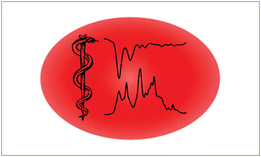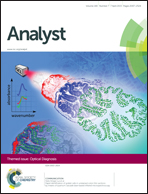Spectropathology for the next generation: Quo vadis?
Abstract
Although the potential of vibrational spectroscopy for biomedical applications has been well demonstrated, translation into clinical practice has been relatively slow. This Editorial assesses the challenges facing the field and the potential way forward. While many technological challenges have been addressed to date, considerable effort is still required to gain acceptance of the techniques among the medical community, standardise protocols, extend to a clinically relevant scale, and ultimately assess the health economics underlying clinical deployment. National and international research networks can contribute much to technology development and standardisation. Ultimately, large-scale funding is required to engage in clinical trials and instrument development.

- This article is part of the themed collection: Optical Diagnosis (2014)

 Please wait while we load your content...
Please wait while we load your content...